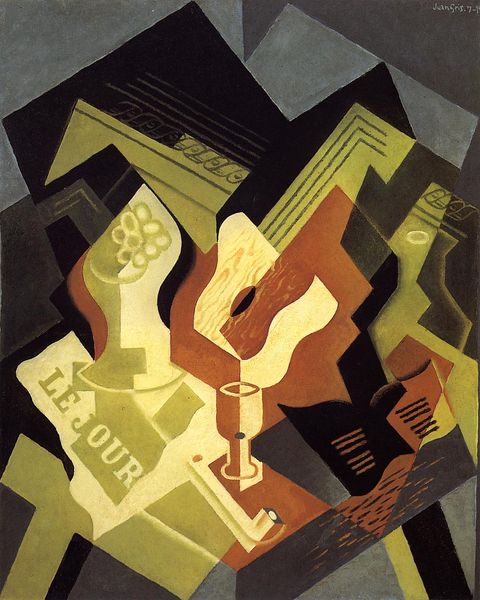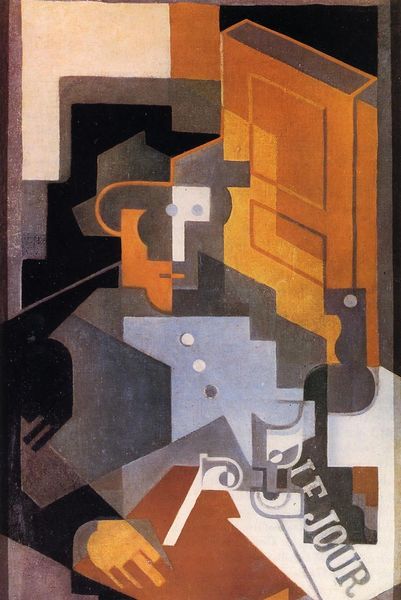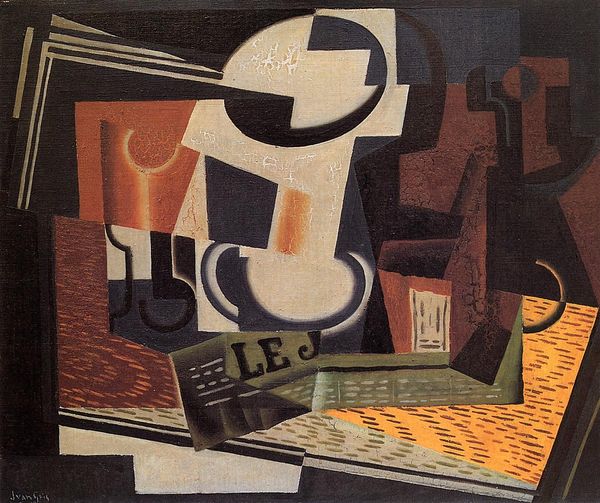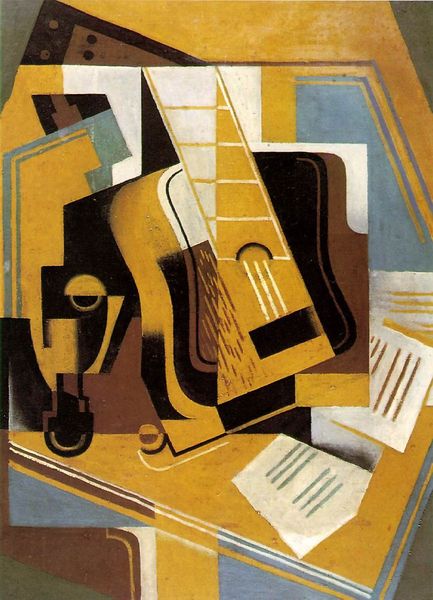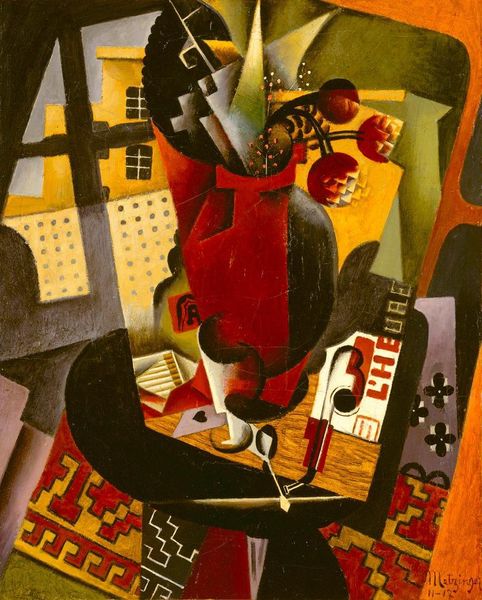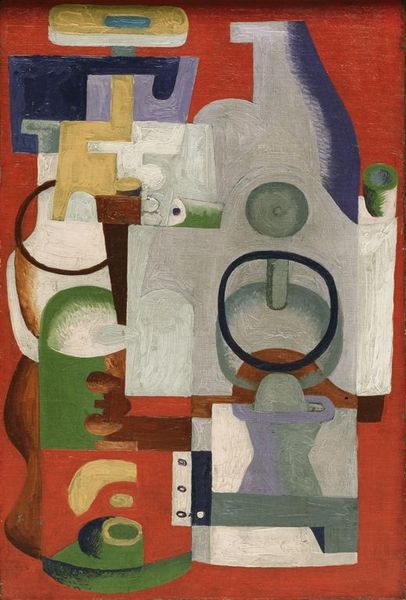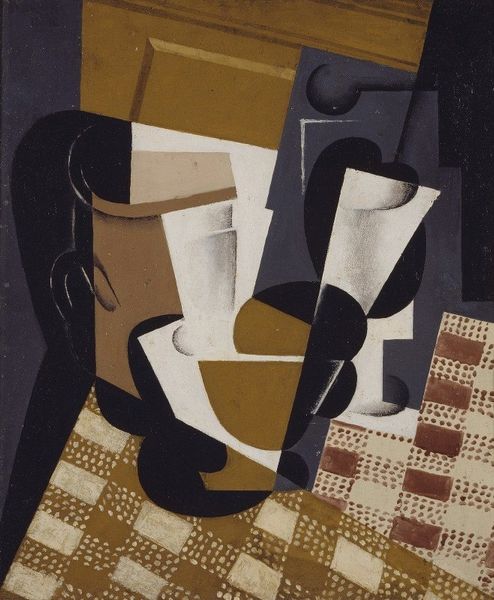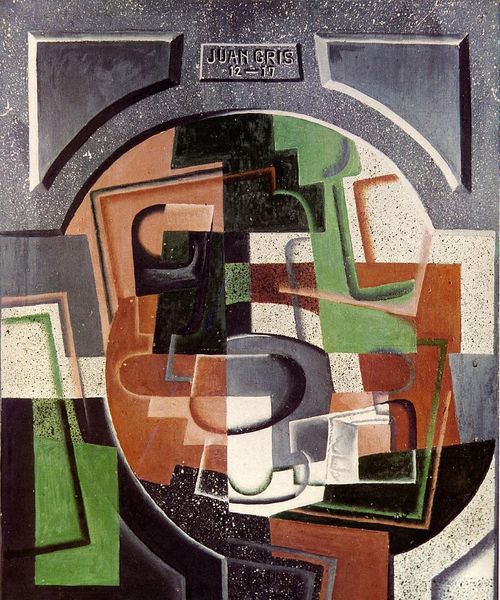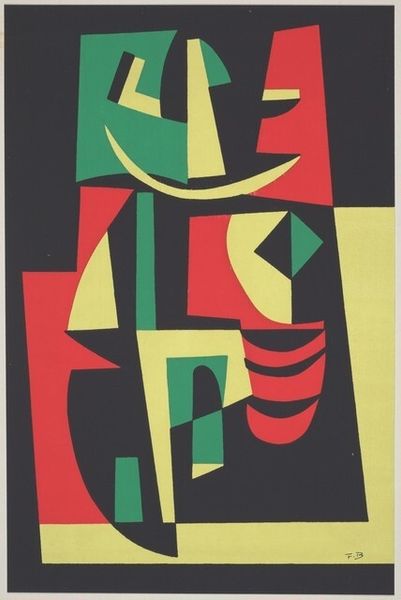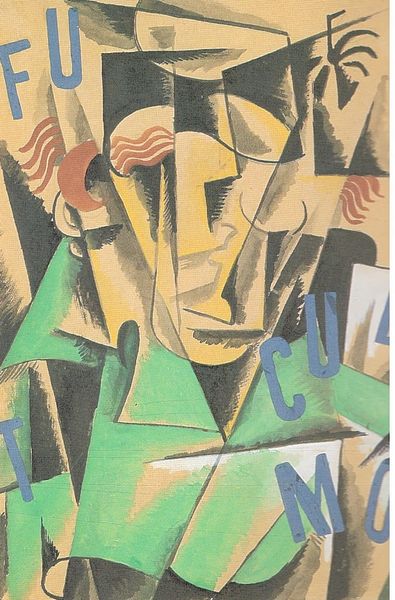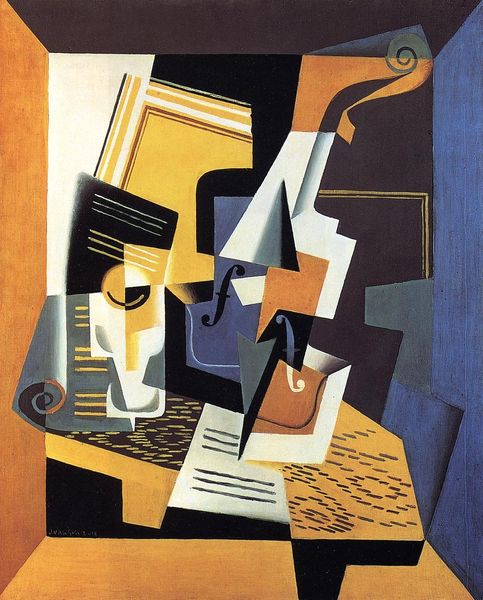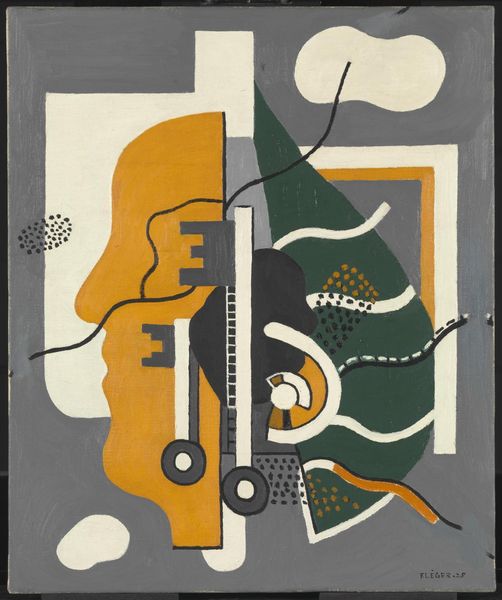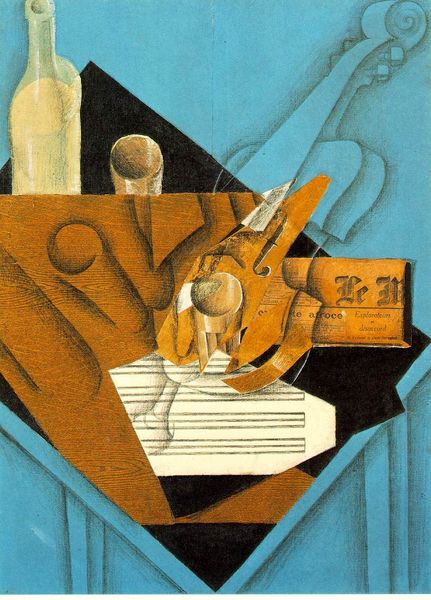
painting, oil-paint
#
cubism
#
painting
#
oil-paint
#
geometric
#
modernism
#
cubism
Dimensions: 61 x 38 cm
Copyright: Public domain
Curator: Here we have Juan Gris’s “Pipe and Fruit Dish with Grapes,” an oil on canvas completed in 1918. It's currently held here at the Kröller-Müller Museum. Editor: My immediate impression is one of fragmented luxury. The color palette is almost playful, but the severe geometry and the collage elements suggest a tension beneath the surface. Curator: Gris, as a leading figure in Cubism, was deeply interested in deconstructing forms and reassembling them to explore the relationship between objects and the picture plane. This piece, created towards the end of World War I, reflects an interesting moment in the material culture of Europe. Notice how Gris utilizes readily available materials like newspapers in the collage—a direct insertion of everyday life into fine art. Editor: Yes, I'm drawn to how the pipe, a symbol often associated with leisure and contemplation, intersects with the "TOUT" fragment of newspaper. “Tout” means “everything” in French. It seems to hint at a fractured worldview or perhaps a yearning for a more complete, comprehensible reality amid wartime disruption. Also, grapes usually symbolize abundance or prosperity. Its juxtaposition here evokes a sense of loss of better times and the basic needs during this time. Curator: The flattened perspective is crucial. Gris wasn't simply depicting these objects; he was dissecting their inherent properties, and forcing us to reckon with what they signified culturally but how they were produced on an industrial scale, the availability of tobacco, for instance, as part of a network of trade. Editor: Absolutely. The colors are intriguing; earth tones contrast vivid hues that give the images of daily consumption—a fruit dish, newspaper, pipe—this weird sense of fantasy as the memory of an absent moment. Perhaps a memory of enjoying an evening or time of entertainment, now deconstructed. Curator: That focus on memory and sensory experiences is certainly enhanced by the interplay of tactile materials and painted illusion, reminding us of art's function as both representation and artifact. The fact it is an oil painting lends the work a certain historical importance despite it's modern qualities. Editor: It speaks volumes, indeed. The work presents us with this notion that even pleasure itself can be torn apart and seen as something fragmented. It makes the work and the memory almost haunted, now. Curator: For me, considering the timing of this creation during the war is to think of what material accessibility to these comforts stood for. Thanks for opening up that other lens.
Comments
No comments
Be the first to comment and join the conversation on the ultimate creative platform.
